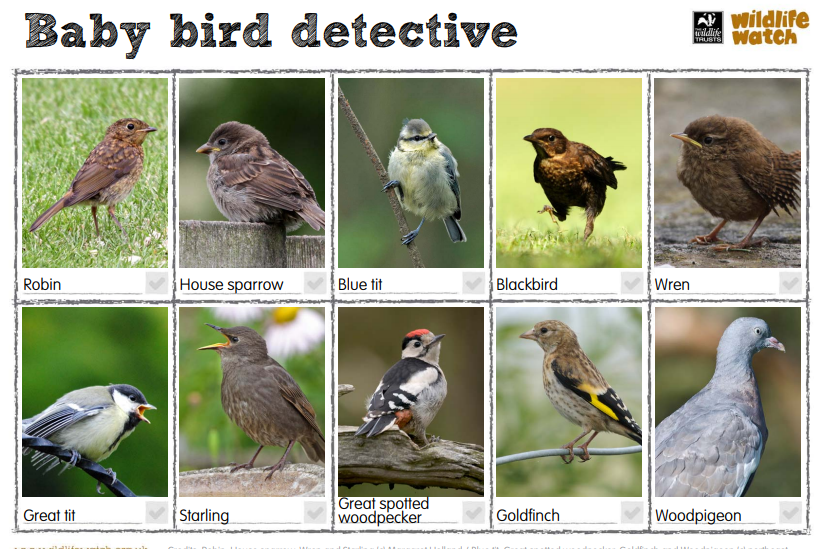Nature News – July
There’s lots going on in our outside spaces this month! What can you see?
| Animals – Look out for bats in the evening swooping over scented flowers, snapping up insects. Bats are having a tough time finding food to eat, and many of their natural roosting places are being damaged and destroyed. | 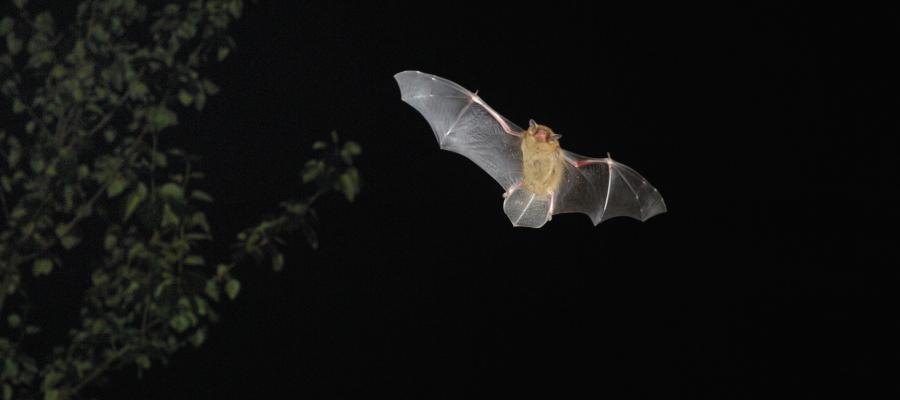 |
| Keep an eye out for common pipistrelles – they are one of our smallest bats, weighing the same as 10 paperclips and are small enough to fit in a matchbox! | 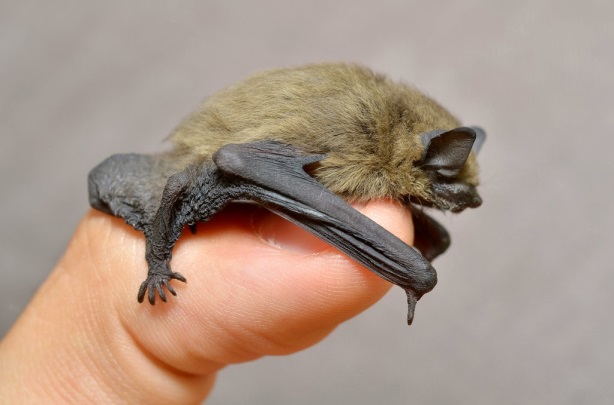 |
Have a look at this clip showing how bats hunt for moths, and what the moths do to try to get away!
Our bats are endangered. Maybe you could help them find a safe place to sleep. Ask someone who’s handy to help you make a bat box. This gives bats somewhere safe to roost, raise their pups and sleep during the day.
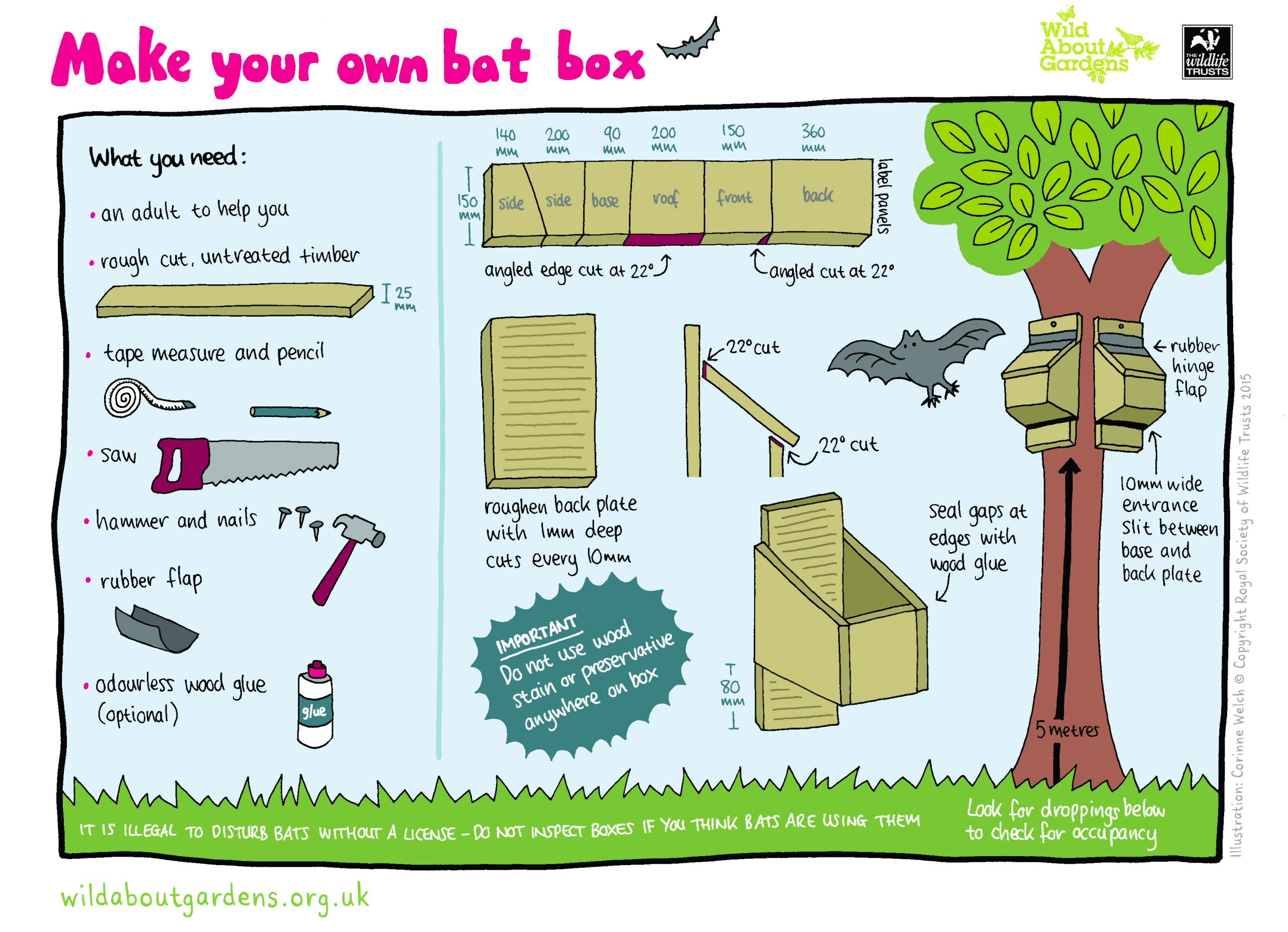 Birds – Look out for birds feeding their young, who will be starting to fly from their nests (fledglings). Use the Baby Bird Spotter to identify them.
Birds – Look out for birds feeding their young, who will be starting to fly from their nests (fledglings). Use the Baby Bird Spotter to identify them.
There can be a lot of competition for food among birds, with so many young fledglings on the scene. It’s good to keep your bird feeder topped up.
Insects – Look out for … At dusk you may notice moths visiting honeysuckle and other scented flowers.
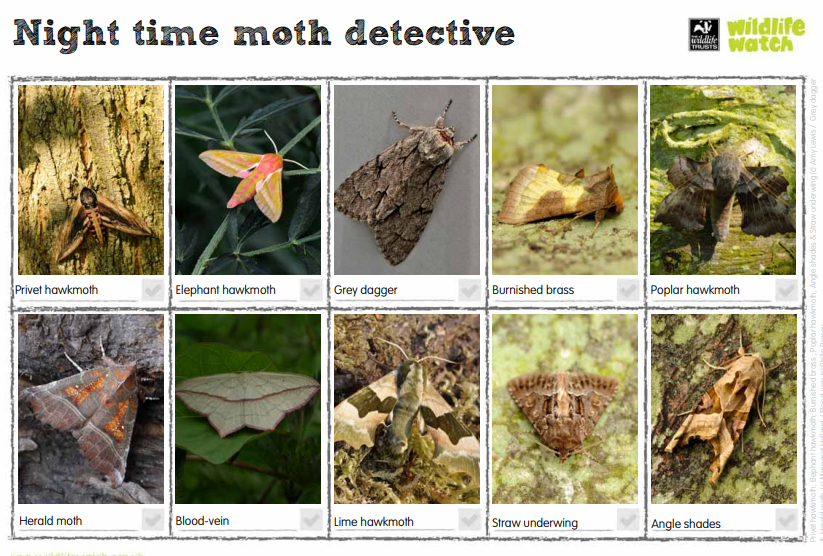 |
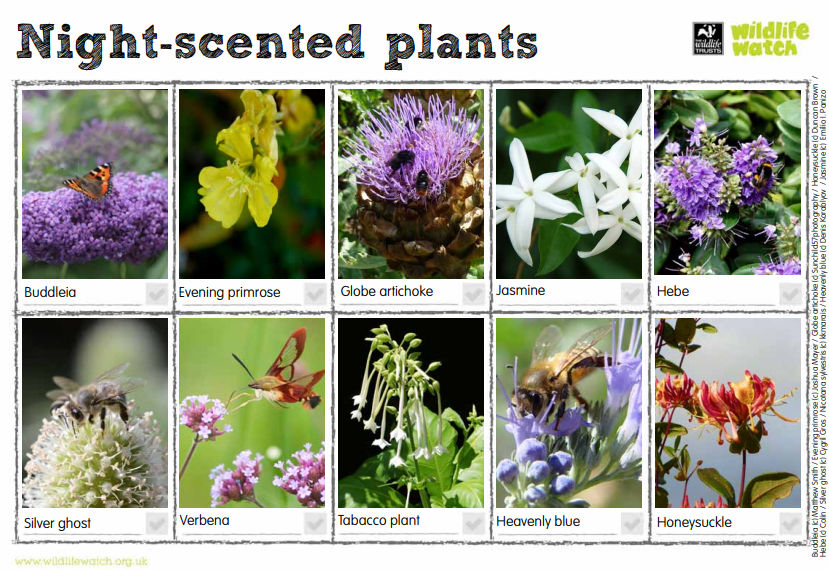 |
| Plants – Look out for wild flowers (check out our Summer Flower Spotter) and enjoy the colours and smells in your garden this month. | 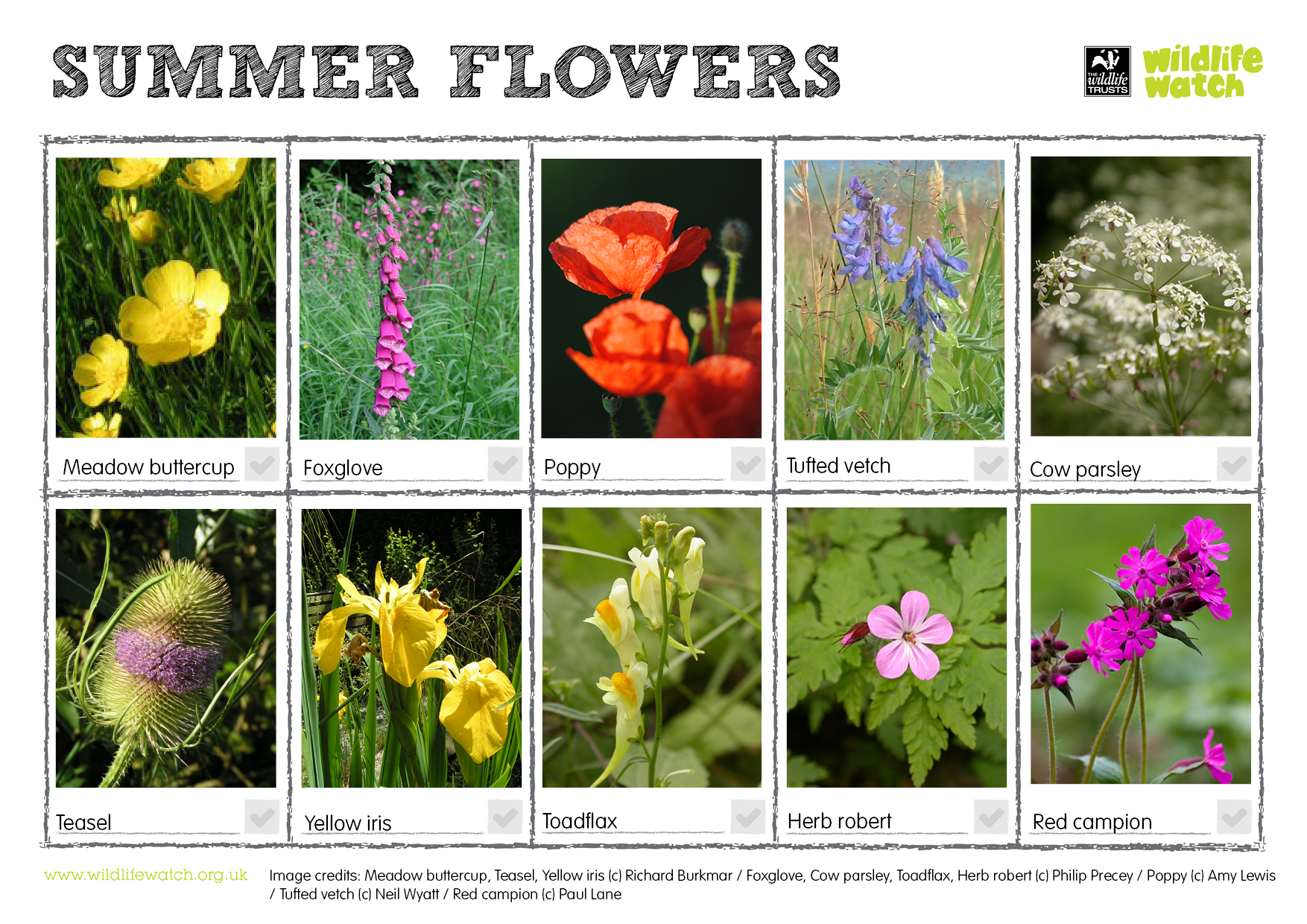 |
Plants from the Mediterranean, which often have grey leaves, are good at coping with summer droughts. Try growing lavender, rosemary or lambs ear. |
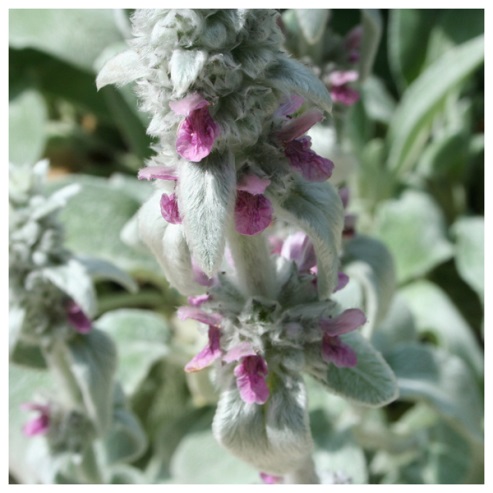 |
